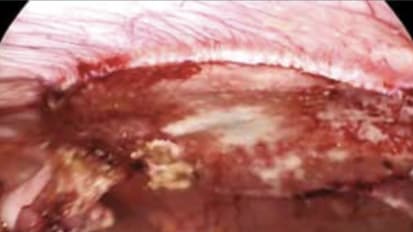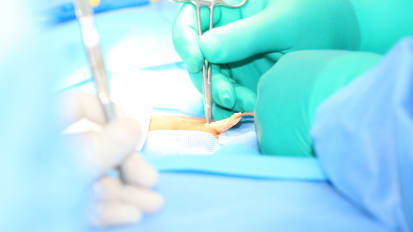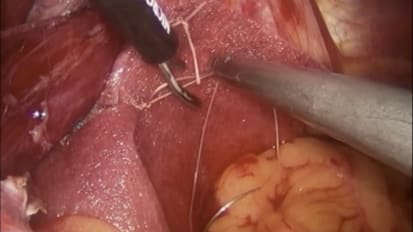
 Document
Document
Mesh Selection for Hernia Repair: Expert Review of Biologic, Synthetic and Bioabsorbable Types
Today, mesh closure is the standard in hernia repair, a credit to advances in materials and surgical techniques since usher. Document
Document
Learn More About GORE® SYNECOR Biomaterials
Hybrid hernia repair device for high BMIs, multiple comorbidities and recurrent defects are now available. Document
Document
Retro-rectus Placement of Bio-absorbable Mesh Improves Patient Outcomes
Our primary objective was to determine the longterm surgical outcomes of retro-rectus and intraperiteonal placement of mesh.Mesh Matters: Supporting Patient Quality of Life in Robotic Complex Hernia Repair
Join us for a live virtual clinical discussion as Dr Amit Gogia, M.D., FACS, reviews emerging trends in complex robotic hernia repair and abdominal wall reconstruction, including a review of mesh materials, and how these may have an impact on patient outcomes. Video
Video
Retromuscular Hernia Repair Using GORE® SYNECOR Preperitoneal Biomaterial with Transfascial Suture Fixation
John P. Fischer, M.D., MPH, FACS, is a specialist in abdominal wall reconstruction. This is a surgical technique video demonstrating the retromuscular repair using GORE® SYNECOR Preperitoneal Biomaterial with transfascial fixation. Video
Video
GORE® SEAMGUARD® Bioabsorbable Staple Line Reinforcement
Professor Michel Gagner shares his experience working with GORE® SEAMGUARD® Bioabsorbable Staple Line Reinforcement. Video
Video
Paraesophageal Hernia Repair Using GORE BIO-A Tissue Reinforcement
William S. Cobb, IV, M.D., FACS, shares a video showing paraesophageal hernia repair using GORE BIO-A tissue reinforcement.